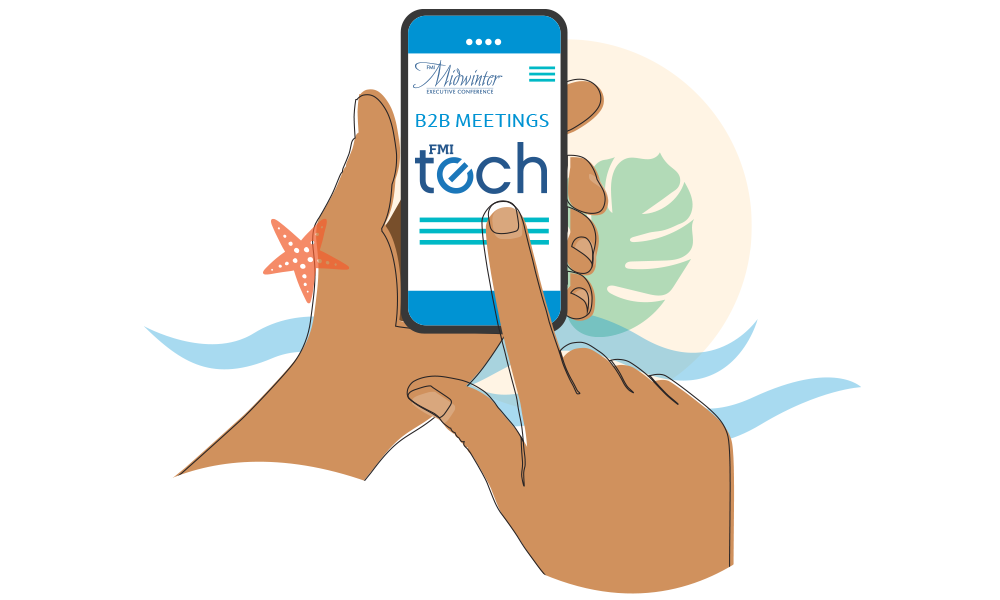By: Steve Markenson, Director, Research & Insights, FMI
For the 31 years I have been married, I have always been the one who did the grocery shopping. Every household divvies up life’s responsibilities differently, and in my home I’m the primary grocery shopper. Throughout the years, my wife’s friends that I’d encounter at the store would marvel at the husband who would take on this task. The truth is I always liked grocery shopping – and it turns out I’m not alone.
Co-shopping, along with men grocery shopping, are trends FMI has identified in our U.S. Grocery Shopper Trends research over the past few years. The pandemic has, accelerated the role of the male shopper, as it has for many shopping trends. Maybe it was just the opportunity to get out of the house, or because we simply wanted to get the food we wanted to eat. Whatever the reason, men are taking on more of the grocery shopping responsibilities.
Below are some important facts from this year’s U.S. Grocery Shopper Trends report that the food industry should know about the men in the grocery store aisles:
- More than half of male shoppers (52%) say they are the household’s primary grocery shopper, up five percentage points in the past year.
- Male shoppers are more likely than female shoppers to love grocery shopping (23% vs. 18%).
- Male shoppers report spending more ($154/week vs. $132/week) and shopping more frequently (1.6 trips/week vs 1.3 trips/week) than female shoppers.
- Male shoppers shop around (for groceries) more than female shoppers (5.2 vs. 4.6 banners per month) and are more likely than females to shop club, natural, ethnic and limited assortment stores.
- Male shoppers have taken to online grocery shopping, representing a majority of online shoppers (52%), and spending more online than their female counterparts ($232/month vs $175/month).
- Compared to female shoppers, male shoppers are not big planners and are less likely to make lists or plan meals in advance of grocery shopping.
- Male shoppers prefer technology (self-checkout, contactless payment and online ordering). They are also more likely than female shoppers to have downloaded their grocery store’s app.
These are just a few things that food retailers and suppliers should consider as they try to attract and satisfy my fellow male shoppers. For more information on this trend, be sure to download FMI’s recently released U.S. Grocery Shopper Trends.


 Industry Topics address your specific area of expertise with resources, reports, events and more.
Industry Topics address your specific area of expertise with resources, reports, events and more.
 Our Research covers consumer behavior and retail operation benchmarks so you can make informed business decisions.
Our Research covers consumer behavior and retail operation benchmarks so you can make informed business decisions.
 Events and Education including online and in-person help you advance your food retail career.
Events and Education including online and in-person help you advance your food retail career.
 Food Safety training, resources and guidance that help you create a company food safety culture.
Food Safety training, resources and guidance that help you create a company food safety culture.
 Government Affairs work — federal and state — on the latest food industry policy, regulatory and legislative issues.
Government Affairs work — federal and state — on the latest food industry policy, regulatory and legislative issues.
 Get Involved. From industry awards to newsletters and committees, these resources help you take advantage of your membership.
Get Involved. From industry awards to newsletters and committees, these resources help you take advantage of your membership.
 Best practices, guidance documents, infographics, signage and more for the food industry on the COVID-19 pandemic.
Best practices, guidance documents, infographics, signage and more for the food industry on the COVID-19 pandemic.
